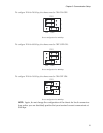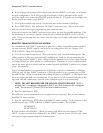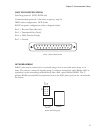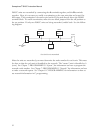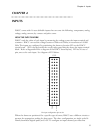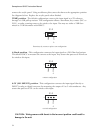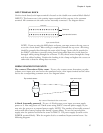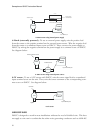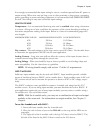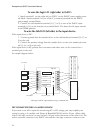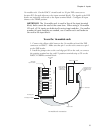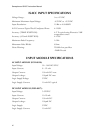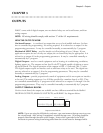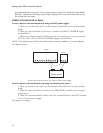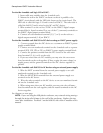37
Chapter 4: Inputs
It is strongly recommended that input wiring be run in a conduit separated from AC power or
output wiring. When wire runs are long or are in close proximity to large power consuming,
power generating or power switching equipment, it is recommended that SHIELDED WIRE
be used. Not doing so may cause erroneous input readings.
LENGTH OF WIRE
Temperature - It is recommended that long wire runs be avoided when using a thermistor
as a sensor. A long run of wire could alter the resistance of the circuit therefore providing an
inaccurate temperature reading of the input. Below is a chart of recommended gauges and
wire lengths:
MINIMUM WIRE GAUGE MAXIMUM WIRE LENGTH LOOP RESISTANCE
#26 250 feet 10.2 Ohms
#24 700 feet 18 Ohms
#22 1500 feet 24.15 Ohms
#20 2500 feet 25.5 Ohms
Dry contact - The total resistance of the loop cannot exceed 50 Ohms. Use the table above
to determine the appropriate GAUGE wire for your application.
Analog Current - Long wire runs will not affect the accuracy of the input because there is
constant current being driven through the sensor wire.
Analog Voltage - Wire runs should be kept as short as possible to avoid voltage drops and
noise susceptibility. Use the chart above as a guideline.
NOTE: All wiring should comply with section 17 of the UL requirements.
INPUT MODULES
Solid state input modules may also be used with ISACC. Input modules provide a reliable
means of interfacing between ISACC and an outside device. Input modules come in AC and
DC versions and are used to measure the presence or absence of AC or DC voltage, respec-
tively.
The ISACC enclosure comes predrilled to mount a 4-module rack using four #6-32 1"
machine screws. If you are using input modules, you must hardwire the rack to ISACC. If
your application requires the use of many input modules, you may want to consider using a
16-module rack. See end of this section.
NOTE: With the 4-module racks, you may use a combination of input and output
modules in the same rack. For information on output modules, See Chapter 5:
Outputs.
To use the 4-module rack with ISACC:
1. Insert solid state modules into the 4-module rack.
2. Place the rack in front of you so that 2IO-4A is at the top and the LEDs are on
your right.
3. The right side of the 4-module rack is the logic I/O that is wired to ISACC. The
left side of the board is the field I/O that is wired to the I/O devices.



